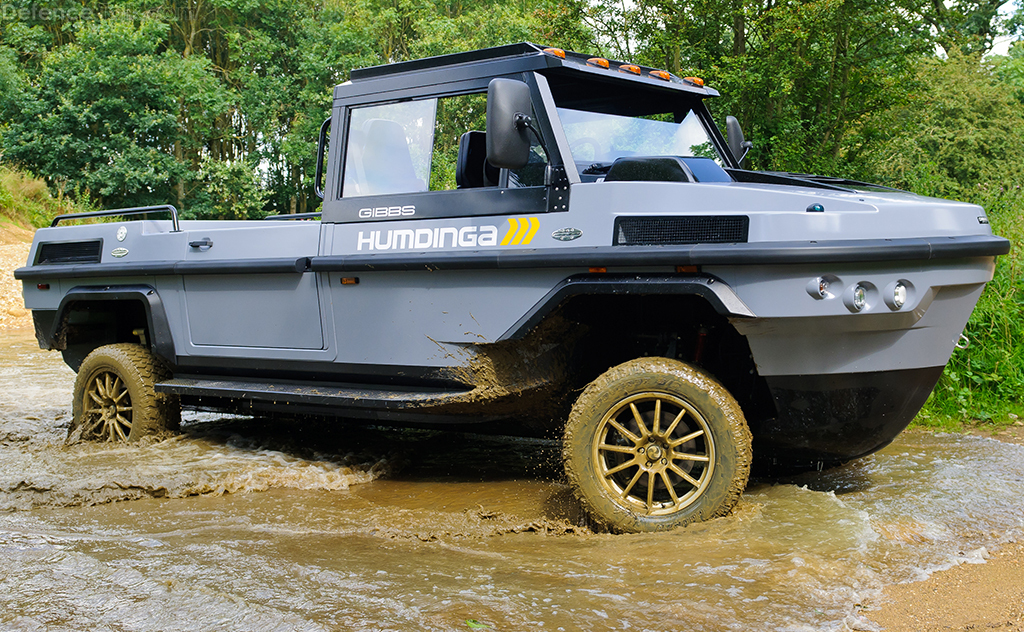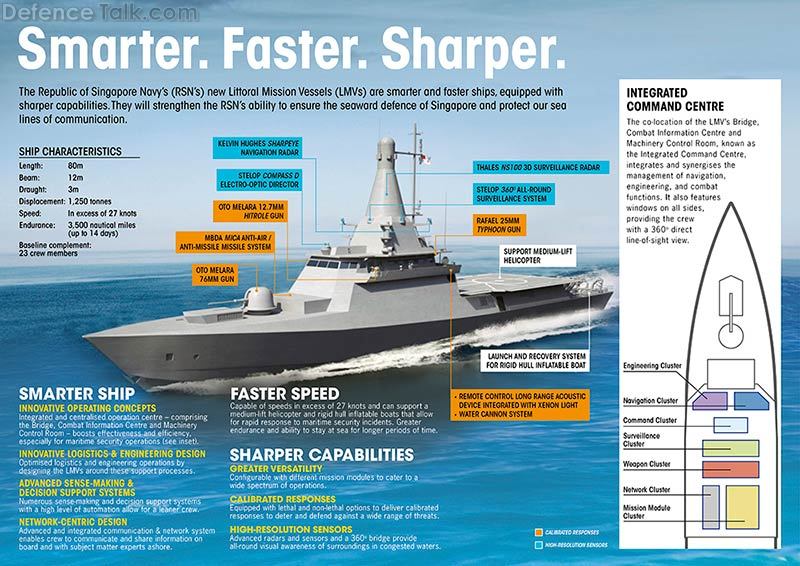ST Kinetics in trials in Canada: BRONCO New Gen new all terrain tracked carrier ST Kinetics Singapore defense industry - YouTube
The new Bronco New-Gen combines the mobility of the lighter Bronco with the proven high survivability of the heavier Warthog. This new video touts a new internal layout, a v-shaped hull and numerous other improvements.
In April 2014, Singapore’s Minister for Defence Dr Ng Eng Hen offered Changi Command and Control (C2) Centre to host a regional Humanitarian Assistance and Disaster Relief (HADR) coordination centre. The offer, made at the ASEAN-US Defence Ministers' informal meeting, was supported by ASEAN Ministers. Singapore's Minister for Defence Dr Ng Eng Hen said:
Speaking to the media ahead of SAF Day, Dr Ng said the recent Typhoon Haiyan in the Philippines underlined the need for a Joint-Multi-Mission Ship (JMMS). On the JMMS he said:
Dr Ng said Singapore is also working out the mechanics to be the region's coordinating centre for Humanitarian Assistance Disaster Relief efforts. However, the centre should not simply respond when a crisis hits, he said. Instead, it should build networks – similar to United Nations agencies and voluntary welfare organisations – and pre-position them so that countries know where these resources are. There will also be some equipping changes for last mile delivery by the Singapore Army, which I would assume means having a more capable watercraft than the existing LARC V. In February 2014, the following was announced:-
The engine change makes perfect sense, as it will enable the Singapore Army to standardize on the same Cat C-9 based power packs for the amphibious Terrex ICV that can drive on its own out the back of an amphibious vessel at least 12 miles from shore and swim at 8 knots and STK's version of this new amphibious resupply vehicle that can swim at above 25 knots.
The new Bronco New-Gen combines the mobility of the lighter Bronco with the proven high survivability of the heavier Warthog. This new video touts a new internal layout, a v-shaped hull and numerous other improvements.
In April 2014, Singapore’s Minister for Defence Dr Ng Eng Hen offered Changi Command and Control (C2) Centre to host a regional Humanitarian Assistance and Disaster Relief (HADR) coordination centre. The offer, made at the ASEAN-US Defence Ministers' informal meeting, was supported by ASEAN Ministers. Singapore's Minister for Defence Dr Ng Eng Hen said:
"It occurred to us that what we really needed was a centre - if you like, a command and control centre - that was stood up all the time (and) had the ability to input all the information that various agencies would bring to bear when such crises occurred and make a coherent picture for everyone to see."
Speaking to the media ahead of SAF Day, Dr Ng said the recent Typhoon Haiyan in the Philippines underlined the need for a Joint-Multi-Mission Ship (JMMS). On the JMMS he said:
"A larger JMMS would be able to carry more helicopters or have more helicopters operating. When we responded to Typhoon Haiyan...basically, the typhoon was so devastating that comms and communication were knocked out. There was no centralised ability for command and control of the airspace. In that context, a ship like the JMMS would have been very useful."
Dr Ng said Singapore is also working out the mechanics to be the region's coordinating centre for Humanitarian Assistance Disaster Relief efforts. However, the centre should not simply respond when a crisis hits, he said. Instead, it should build networks – similar to United Nations agencies and voluntary welfare organisations – and pre-position them so that countries know where these resources are. There will also be some equipping changes for last mile delivery by the Singapore Army, which I would assume means having a more capable watercraft than the existing LARC V. In February 2014, the following was announced:-
See also Humdinga Demo in Singapore:
"Graham Jenkins, public relations and marketing director for Gibbs Amphibians, said that initially, ST Kinetic, also known as STK, will also have the opportunity to sell the Humdinga throughout the world. Gibbs is working on licensing agreements for the Humdinga with companies in other regions of the globe. The Humdinga is a 21.5-foot, four-wheel-drive fast amphibian that is capable of reaching the most challenging and remote terrain in the world. It is designed for use in flooded areas where it’s ability to go between dry areas, moderately flooded areas and deep water... The four-wheel-drive Humdinga is 21.5 feet long... “The government (customers of STK) are very interested in getting a vehicle to handle those kinds of conditions,” Jenkns said

STK is licensing Gibbs High Speed Amphibian technology, which includes its retractable suspension system, proprietary jet design as well as other design characteristics such as the hull shape that allows Gibbs’ vehicles to make have a shallow keel, which improves ground clearance on land. STK will also be able to use the Humdinga name, but it has not been decided whether it would carry the Gibbs or STK name. The Gibbs Humdinga is capable of 30 mph on water and highway speeds on land. STK will make some design modifications to the Humdinga, possibly including a new engine. STK will take one to two years to reengineer the vehicle and set up a production in Singapore. Jenkins anticipates that STK will produce about 200 units within a year of beginning production. Beyond that, production numbers are a pure guess, but he said that it could easily rise into the thousands per year. Gibbs is looking for three to seven additional partners for programs similar to the Humdinga. Jenkins said STK is paying Gibbs a large, upfront licensing fee and a royalty for each vehicle it sells. He did not disclose the amount of either the licensing fee or the royalty. The Humdinga is capable of 30 mph on water and highway speeds on land."

STK is licensing Gibbs High Speed Amphibian technology, which includes its retractable suspension system, proprietary jet design as well as other design characteristics such as the hull shape that allows Gibbs’ vehicles to make have a shallow keel, which improves ground clearance on land. STK will also be able to use the Humdinga name, but it has not been decided whether it would carry the Gibbs or STK name. The Gibbs Humdinga is capable of 30 mph on water and highway speeds on land. STK will make some design modifications to the Humdinga, possibly including a new engine. STK will take one to two years to reengineer the vehicle and set up a production in Singapore. Jenkins anticipates that STK will produce about 200 units within a year of beginning production. Beyond that, production numbers are a pure guess, but he said that it could easily rise into the thousands per year. Gibbs is looking for three to seven additional partners for programs similar to the Humdinga. Jenkins said STK is paying Gibbs a large, upfront licensing fee and a royalty for each vehicle it sells. He did not disclose the amount of either the licensing fee or the royalty. The Humdinga is capable of 30 mph on water and highway speeds on land."
The engine change makes perfect sense, as it will enable the Singapore Army to standardize on the same Cat C-9 based power packs for the amphibious Terrex ICV that can drive on its own out the back of an amphibious vessel at least 12 miles from shore and swim at 8 knots and STK's version of this new amphibious resupply vehicle that can swim at above 25 knots.




